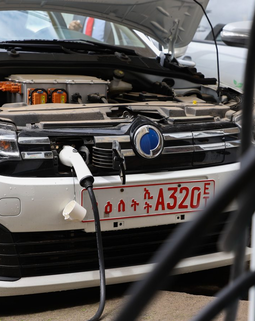Ethiopia’s auto manufacturing is in the newborn stage. Countries like South Africa and Morocco rule the industry with a production capacity of 200,000 to 600,000 vehicles annually. However, it aims to transform its industry with the help of local automakers and assemblers and make itself the largest automobile manufacturer in Africa. Addis Ababa and Mekelle intend to be the auto industrial hub for the country. This is also where the vehicles are assembled for their Chinese partners.
About 8000 vehicles are produced in Ethiopia in a year, of which only 2000 are cars. However, experts claim that production growth is possible if the more foreign exchange is invested in the importation of kits. Even for Belayab Motors, experts say that if they are producing 500 cars a year, with the extra labor and money, they can go up to 1000.
Ethiopian assemblers, which assemble vehicles for companies like BYD, Geely, and even Lifan, have to face the same hurdle of limited importation of kits due to the inadequate Ethiopian reserves. Ma Qun, China Lifan's deputy manager in Ethiopia, says that Ethiopia has the potential to produce at least 5000 cars a year. He further added that they intend to export vehicles from Ethiopia by 2018.
Despite the shortcoming, Ethiopia has built new dams, which have doubled the electricity generation making the country an exporter. With this boost in the economy, Tadesse Haile, the state minister of the industry, says that we intend to become the largest exporter of cars in Africa in the coming 15 to 20 years and not just be assembling them but become a manufacturing-based industry.
Today China is building a railway, which will soon connect Ethiopia to the Djibouti port. This port connects the Red Sea and the Indian Ocean, making imports and exports much easier and more convenient for the country. China also imports cheaper car kits to Ethiopia than from rivals like Japan. Mirroring the Chinese approach, the country is now making Ethiopia, a major manufacturer of Chinese car firms.
Even after such production, the country imported 38000 cars in 2015, which is twice what was imported last year. In Ethiopia, you see a huge number of old vehicles which date back to the 1980s Soviet Era. Importation of used vehicles is also a major shortcoming making the automakers in the country suffer. The government provides several tax cuts when the imports exceed a certain percentage.
For auto car manufacturers, the major drawback is the raising of capital. If they request USD 500,000 for a month’s shipment from the bank, they are given USD 200,000. This shortage of foreign exchange leaves them with a small amount of production, which is insufficient when they know they can produce more if given the right resources.
Another notable factor is that the cars do not hold their prices and keep going down over time, as the consumers doubt the quality and the resale value of the vehicles. The marketing manager at Mesfin, Mr. Endalkachew Mekonnen, says that the country is still on to making semi-knockdown kits. However, we need to focus on complete knockdowns as they are in more demand.
IMF suggests that Ethiopia should boost the newly emerging private sector, which could play a vital role in helping the country's auto manufacturing growth.





